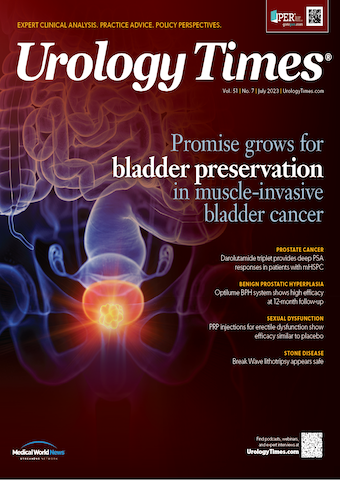Publication
Article
Urology Times Journal
Fixed income investments: Which option is right for you?
Author(s):
"Overall, there are plenty of options for keeping cash. The trick is determining the best option for your needs," writes Jeff Witz, CFP.
Jeff Witz, CFP

For more than a year, the US Federal Reserve has been raising interest rates to try and cool the economy and combat inflation. This has had far-reaching effects on economic production, hiring, borrowing, and consuming. Consumers have been significantly affected by the rising cost of borrowing. Interest rates on mortgages, car loans, credit cards, and home equity lines of credit have increased significantly. Consumers must pay more to borrow across the board.
However, one area where rising interest rates have had a positive impact for the average investor is in the fixed-income space. Bonds, certificates of deposit (CDs), money market funds, high-yield savings accounts,bond mutual funds and exchange-traded funds are producing decent returns for the first time in over a decade. During the 2008-2009 financial crisis, the Federal Reserve reduced interest rates to historic lows to stimulate the economy. This led to years of inexpensive borrowing, but also low returns from fixed-income products. This forced many investors into higher-risk investments such as stocks. For now, that scenario appears to be over.
Savers now have several lower-risk options where they can invest excess cash, whether that cash is their emergency fund, an upcoming down payment on a large purchase (like a home), or money needed to support their standard of living. Here is a look at these options and their advantages and disadvantages.
Individual bonds. Corporate, federal, and municipal bonds offer a predetermined rate of return if the bond is held to maturity and the lender does not default. This means that at maturity, you receive your principal investment back plus interest. The interest you can earn, known as the yield, is most often expressed as a percentage return. The challenge with individual bonds is liquidity. If you need to sell the bond before maturity, you may have to sell that bond at a discount to entice a buyer. In some circumstances, this means missing out on the interest payment at maturity and selling the bond for less than you paid for it.
CDs. Like individual bonds, if held to maturity CDs pay out a predetermined rate of return. Most commonly offered by banks, CDs can provide returns similar to those of individual bonds. They also come with Federal Deposit Insurance Corporation (FDIC) insurance in case the bank runs into financial difficulty. However, there can be greater liquidity concerns. If you need to pull the money out of a CD before it matures, you can be penalized as much as 3 months’ interest.
Bond and CD ladders. If there is a concern about liquidity or changes in interest rates, creating a bond or CD “ladder” may be a good approach. A ladder refers to purchasing bonds or CDs of varying terms and recycling the proceeds as they mature. For example, a ladder may mean investing in 3-, 6-, 9-, and 12-month CDs. As the 3-month CD matures, you use the proceeds to purchase a new 12-month CD. As each subsequent debt instrument matures, you do the same. A ladder allows an investor to access some funds sooner or adjust their strategy to changes in interest rates. The downside is that a ladder can take considerable time to set up and manage.
Bond funds. If you have concerns about owning individual corporate or government bonds, or if you are looking for professional management, bond funds can be a good option. Many bond funds own hundreds, if not thousands, of bonds. By investing in that one fund, you are essentially invested in all the bonds within that fund. As bonds mature, the fund pays out the proceeds in the form of a dividend. The downsides are that these funds charge a fee that can cut into returns, and the yield can lag individual bonds as it takes time for the fund’s existing bonds to mature and for them to cycle in new bonds with higher rates.
High-yield savings accounts. If accessibility is a primary concern, a high-yield savings account can be a good option. These accounts are normally offered by traditional and online banks and act like a regular savings account, except they provide a higher return. You can typically move money more freely in and out of these accounts, so they have greater liquidity than bonds and CDs. Potential downsides are that some require a certain minimum initial deposit and ongoing balance, some can charge fees, and some restrict transfers directly to your checking account.
Money market funds. Like high-yield savings accounts, money markets provide a higher rate of return than just cash. These funds are typically used in an investment brokerage account to house unused cash while it waits to be invested or used for other purposes. The downside can be liquidity. It typically takes a day for the fund to be sold and the cash to become available for investment or withdrawal.
Overall, there are plenty of options for keeping cash. The trick is determining the best option for your needs. If you are unsure which option may be best for you, speak with your financial adviser.
8750 W. Bryn Mawr Ave. Suite 325 Chicago, Illinois 60631
312-419-3733 - Toll Free 800-883-8555 - Fax 312-332-4908 - www.mediqus.com
Investment advisory services offered through MEDIQUS Asset Advisors, Inc. Securities offered through Ausdal Financial Partners, Inc.Member FINRA/SIPC ∙ 5187 Utica Ridge Rd ∙ Davenport, IA 52807 ∙ 563-326-2064 ∙ MEDIQUS Asset Advisors and Ausdal Financial Partners, Inc. are independently owned and operated.



























